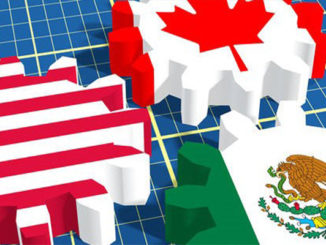
by Antonio Garza
For the past twelve years, my work has taken me back and forth across the United States’ and Mexico’s shared border. I’ve watched as the two countries took steps forward, and sometimes back, steadily tying together communities from Mexico’s southern states up through northern Canada. It is clear to me that as Americans, we live in the world’s most dynamic region. But we have yet to fully capitalize on what can be achieved by working together.
Our three countries’ deep ties go back decades, but recent changes present an opportunity to create even stronger cooperation. Mexico’s wide-ranging and ambitious reforms (especially in its energy and telecommunications industries) are allowing for deeper regional integration than anything possible for over half a century. And new technologies and innovations in our energy sectors are unleashing production across the continent, making us — the United States and North America — increasingly energy secure.
Earlier this month, the Council on Foreign Relations released a new task force report on North America, chaired by Gen. David Petraeus and Ambassador Robert Zoellick. The report succinctly captures North America’s promise as a global powerhouse, highlighting its almost 500 million people, quarter of the world’s GDP, three stable democracies and innovative private sectors. It urges U.S. policymakers to build on this continental base when they create policies both at home and abroad.
Embracing this type of North American approach will mean working together across a range of issues. Economically, it will require tackling the remaining trade barriers, such as regulatory divergences, complicated customs paperwork and infrastructure bottlenecks. While in the three energy sectors, it will mean devising a North American strategy that lays the framework for smoother infrastructure integration and shared environmental and safety standards.
This approach also requires the freer movement of people and a flexible North American workforce. To achieve this, the Task Force supports comprehensive immigration reform in the United States and suggests pathways for both high- and low-skilled workers. At the same time, it supports deeper regional security cooperation. For common objectives — such as strengthening Mexico’s rule of law and identifying threats — working together, the report argues, will be the most effective path forward.
My home state of Texas is front and center in a lot of this, as a border state, a regional business hub, an energy player and home to millions of Mexicans (and more than a few Canadians). But North America’s ties extend beyond the borders, and successes and failures will be felt far into the three countries’ heartlands.
This is all not to say that strengthening regional ties will be easy. Histories of mistrust, pursuits of narrow interests, and ups and downs in public and political opinions have all complicated deeper cooperation. And North America has also suffered from its own success. The region’s relative peace and stability (Mexico’s insecurity being the exception) has often relegated it to the political backburner as global flare-ups capture policymakers’ immediate attention.
We are no doubt three very independent countries with distinct historical narratives, political systems and societies. Yet as all three countries position themselves globally, especially vis-à-vis China and other emerging powers, our shared continental base is one of our best competitive advantages. North America should serve as the United States’ launching point into the coming decades. It is through working together that we will achieve more than any of our three countries could accomplish alone.
Now is the time to build on the task force’s approach to North America — which I would characterize as a crucial and necessary change in our mindset. It’s time we embrace a more forward-looking vision in the region, and then move it to the top of all our leaders’ agendas.
Tony Garza is a former U.S. ambassador to Mexico.



